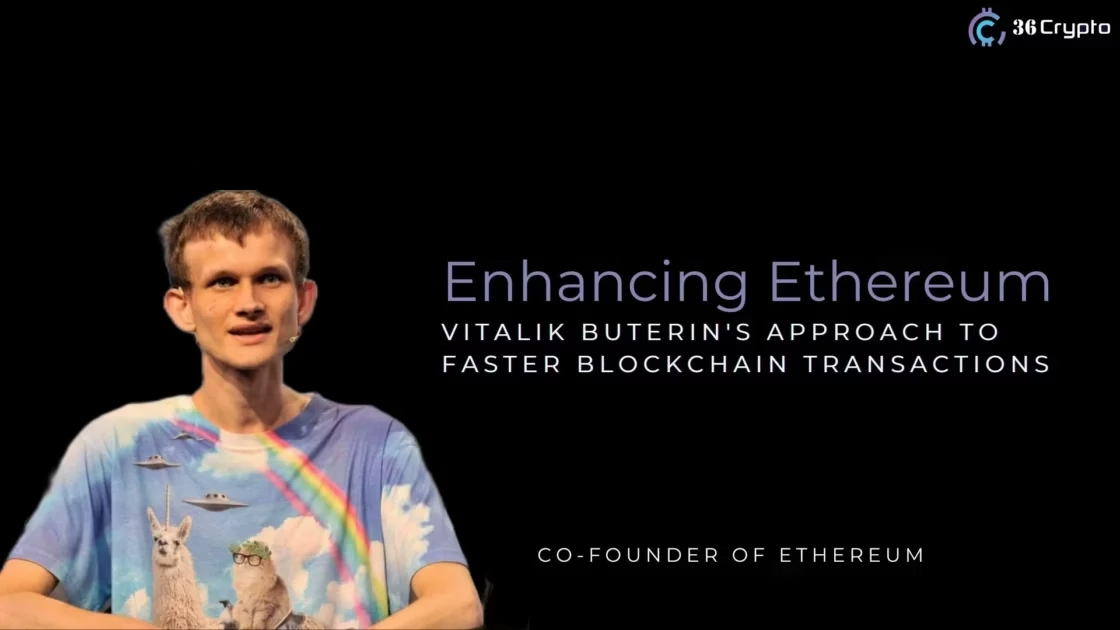“One of the important properties of a good blockchain user experience is fast transaction confirmation times,” emphasizes Ethereum co-founder Vitalik Buterin in his latest article. He notes that although Ethereum has improved significantly since five years ago, there is still a need to further improve the user experience. In the article, Buterin describes several methods to enhance the transaction speed of the blockchain.
A Method to Speed Up Transactions in Ethereum
In 2022, the Ethereum Merge took place, which was a transition from the consensus proof-of-work mechanism to proof-of-stake. According to Buterin, this reduced the confirmation of L1 transactions to 5–20 seconds. However, he notes that this is roughly on par with the speed of credit card payments and adds that there is potential for further transaction acceleration. One of the methods the expert suggested is to change the architecture of slots and epochs that reference Ethereum 2.0 and the underlying Ethereum Gasper consensus.
Slots refer to 12 seconds during which a randomly selected ETH validator, or staker, has time to propose a block. Every 32 slots constitutes one epoch, which requires 32 sets of committees – or validator groups – to complete the validation process on the Ethereum blockchain.
Read Also: ETFs on Ethereum Closer to Getting Approval by the SEC, Price Rebound Expected
The Gasper consensus system aims to ensure a critical Ethereum concept known as finality. It ensures that once a transaction, slot, or era is complete, a block cannot be changed or removed from the blockchain without burning 33% of the total staked Ether.
According to Buterin, the Ethereum Foundation is becoming “increasingly uncomfortable” with the current slot voting mechanism and approach to finality. This system is prone to many errors and is extremely inconvenient. He noted that with this infrastructure, it takes too long to finalize a block, currently taking 12.8 minutes. To solve this problem, he suggested replacing the current model with SSF. However, this method has not yet been fully developed and risks running into some problems.
“The main challenge with SSF is that naively, it seems to imply that every single Ethereum staker would need to publish two messages every 12 seconds, which would be a lot of loads for the chain to handle,” he said.
To overcome such problems, the Orbit SSF system is being developed, but Buterin adds that such an infrastructure still does not change the fact that users have to wait 5–20 seconds. The expert goes on to note that Ethereum is still far from having definitive answers to all questions related to potential methods of speeding up transactions on its network. According to him, projects such as Orbit SSF have only recently emerged, which indicates that their slot and epoch design space is still not sufficiently explored.
“The more options we have, the better we can do for users both on L1 and on L2s, and the more we can simplify the job of L2 developers,” Buterin adds at the end.
Ethereum Introduces EIP-7732
On 3 July, Ethereum developers introduced a new proposal, EIP-7732, aimed at revising the block verification process and speeding up the blockchain. The decision is a response to Ethereum co-founder Vitalik Buterin’s call to reduce the time for transaction validation due to the increased demand for Ethereum blockchain performance.
EIP-7732 aims to reduce the computational burden on validators by separating the consensus and execution levels, increasing the efficiency and speed of the network. The Ethereum blockchain requires validators to perform consensus and execution functions in a short period, creating potential inefficiencies and delays in the process.
EPBS will allow validators to focus on immediate consensus verification and defer execution verification to a later time without compromising network performance and security. Additionally, Consensys, the company behind the Ethereum software and MetaMask crypto wallet, has recently introduced security improvements to the wallet. Specifically, they have acquired the Wallet Guard app to enhance the security of the non-custodial wallet.
The Wallet Guard service can detect fraudulent transactions and phishing links by verifying transactions on the client side. According to Consensys, the company’s software provides “maximum protection” in the Web3 space. Moreover, the entire Wallet Guard team will join Consensys as part of the MetaMask security division.
Consensys emphasizes that security remains one of the key issues in the crypto asset industry. According to the Chainalysis report, in 2023, hackers stole $1.7 billion through various fraudulent schemes. At the same time, in 2022, this figure reached $3.7 billion.
MetaMask provides access to decentralized applications and non-fungible tokens (NFTs) on Web3 to more than 30 million active users every month. In addition, the platform is integrated with several companies, such as OKX, Bybit, WhiteBIT, etc., to provide a more secure and convenient way to authenticate.
Summary
A recent article by Vitalik Buterin highlights the need to improve the user experience on the Ethereum blockchain by reducing transaction confirmation times. Despite significant improvements, especially after the Ethereum Merge in 2022, there is still room for optimization. Buterin suggests several methods, including architectural changes to slots and epochs, as well as the potential introduction of SSF, although these solutions are still under development and present their challenges.
Read Also: Chainlink Rallies Following Whales’ $77 Million Accumulation

